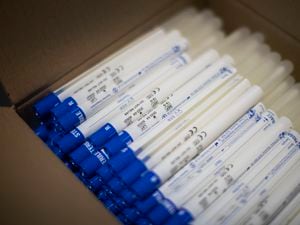Hundreds more dead in Shropshire than predicted - showing impact of pandemic
The county's death toll during the last of the coronavirus pandemic was hundreds higher than previous years, figures suggest.

That’s according to Public Health England data that compares the number of deaths registered during the last year with how many were predicted based on previous mortality rates.
The county saw 5,819 deaths from any cause registered between March 21 last year – just days before the UK’s first lockdown – and March 19 this year, with 4,006 in Shropshire and 1,813 in Telford & Wrekin.
For Shropshire it was 402 more than the 3,604 predicted based on the previous five years, and in Telford & Wrekin it was 250 above the expected 1,563.
It means there were 11.2 per cent more deaths than expected for Shropshire, and 16 per cent more in Telford & Wrekin – although both were below the England average of 20 per cent.
So-called “excess deaths” are considered a better measure of the overall impact of Covid-19 than simply looking at mortality directly linked to the virus, as they capture deaths that may have been indirectly caused by the crisis, and are not affected by changes in the level of testing.
Over the same period, there were 635 deaths in Shropshire with Covid-19 mentioned on the death certificate, and 278 in Telford & Wrekin.
Nationally, more than 100,000 excess deaths were recorded, while there were 129,000 with Covid-19 mentioned on the death certificate.
Dave Finch, senior fellow at charity the Health Foundation, said the two figures differed because Covid-19 is mentioned on death certificates even if it is not the leading cause of death.
'Complex'
He added: “However, what is clear is the huge scale of the impact of Covid-19 on the number of deaths and that the impact has tended to be greater in more deprived areas, reflecting the pattern of existing health inequalities.”
The 13 places to see the biggest increases in registered deaths compared to those expected were all in London.
Newham saw the largest rise, at 53.7 per cent, while at the other end of the spectrum, registered deaths were 2.7 per cent higher than expected in Devon.
Dr Yvonne Doyle, medical director at Public Health England, said there were “complex and deep-rooted” reasons why certain areas have been hit harder by the pandemic than others, including age in the community, ethnicity, levels of deprivation, and what jobs people do.
She added: “These are all factors that can make people more vulnerable to Covid-19. The worst affected communities are likely to have felt the impact of several disparities combined.
“However, we also know that by sticking to the rules, and having the vaccine when offered one, we can all do our part to help protect ourselves and those around us wherever we live.”





